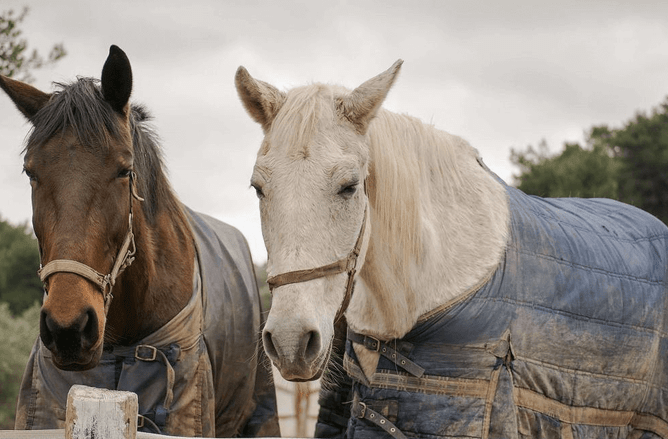Southland traditionally has a mild, warm wet Autumn that can last well into May (and in recent years into June), and these weather conditions are ideal for the development and survival of parasite larvae, fungal and bacterial infections. In Southland, we traditionally see an increase in colitis (severe acute diarrhoea) in the autumn months. The exact cause is often not determined but may be due to a bacterial colitis (e.g. salmonella) or due to parasitism. This year with a feed pinch during the summer months followed by warm autumn rain, sets up the ideal scenario for larval cyathostomaisis to develop. The development of severe diarrhoea secondary to the emergence of encysted cyathostome larvae from the wall of the large colon and caecum in horses results in a common pattern observed following periods of reduced pasture grazing height such as that seen during a summer drought or during a cold frosty winter. The damage caused to the intestinal wall results in profuse watery diarrhoea and the development of severe endotoxaemia that requires intensive treatment and can be fatal. Preventive measures include monitoring your horses' worm burden by regular faecal egg counts pre-emptive deworming with an anthelmintic targeted at encysted larvae. The main anthelmintics that have adequate efficacy against encysted larvae are Moxidectin (Ultramox or Equest Plus) or administration of a ‘Panacur Bomb’ which involves a five-day course of Fenbendazole (Panacur) followed by Ivermectin. In severely affected horses with repeatable high worm counts, the course of Panacur/Ivermectin may need to be repeated at two weekly intervals. Grazing management including twice-weekly picking up of manure and cross grazing with other animal species (e.g. sheep or cattle) are recommended. Although commonly carried out, harrowing paddocks in the autumn and spring followed by grazing within 6 weeks is not recommended as a means of controlling infective larvae as the warm moist environment allows larvae to survive and become infective.
Hoof Health
General hoof health and condition is always something that catches up with horses during both the drier summer period and then the wetter winter months. During the dusty days of summer, it is hard to believe that some horses could end up spending months on end walking in mud and wet paddocks. Cracks in the hooves are great avenues for abscesses to start and lack of care and attention through regular routine farriery or standing animals off in a drier paddock or stable will go a long way to keep those abscesses at bay. A flush of grass following some decent rain will likely lead to laminitis in some susceptible horses. The development of subclinical laminitis in the autumn months can lead to the development of underlying pedal bone changes. Some of these changes may go unnoticed until the spring when acute laminitis develops.
Nutrition
Horses that are affected by lush green grass may become 'grass affected' when decent rain arrives. Horses require large amounts of fibre in their diet. Good quality forage (grass, hay, oat straw, haylage etc) will be, and always should be, the staple diet of our horses. However, forage needs to be readily available, and ideally 24/7, in order to maintain healthy gut function. Should your horse be prone to laminitis, equine metabolic syndrome or the sugar seems to go to their ‘head’, then soaking the hay for at least half an hour is recommended. As your horse gets older he may find it easier to chew and digest softer meadow hay to the harder seed hays or he may appreciate his hay being soaked prior to feeding. Supplementation with a good multi-mineral mix or a quality premix feed is also recommended. The provision of horse mineral lick blocks is becoming increasingly popular. Molasses based blocks are highly palatable and will provide your horse with much-needed trace elements including biotin and zinc for good hoof growth, however, these should be offered sparingly for horses prone to laminitis. A simple blood test can be taken from your horse to check the selenium status as well as other trace elements.
Shelter
While stabling is not essential for all older equines, any clipped, sick or underweight animals will require warm blanketing and a place to shelter from the extremes of winter. We all know how much nicer it is to be out of the wind when the Sou' Wester is blowing!!
For more information or to book your horse in for a Pre-Winter Wellness check, do not hesitate to contact us at your nearest VetSouth Clinic.
- Heather Busby

